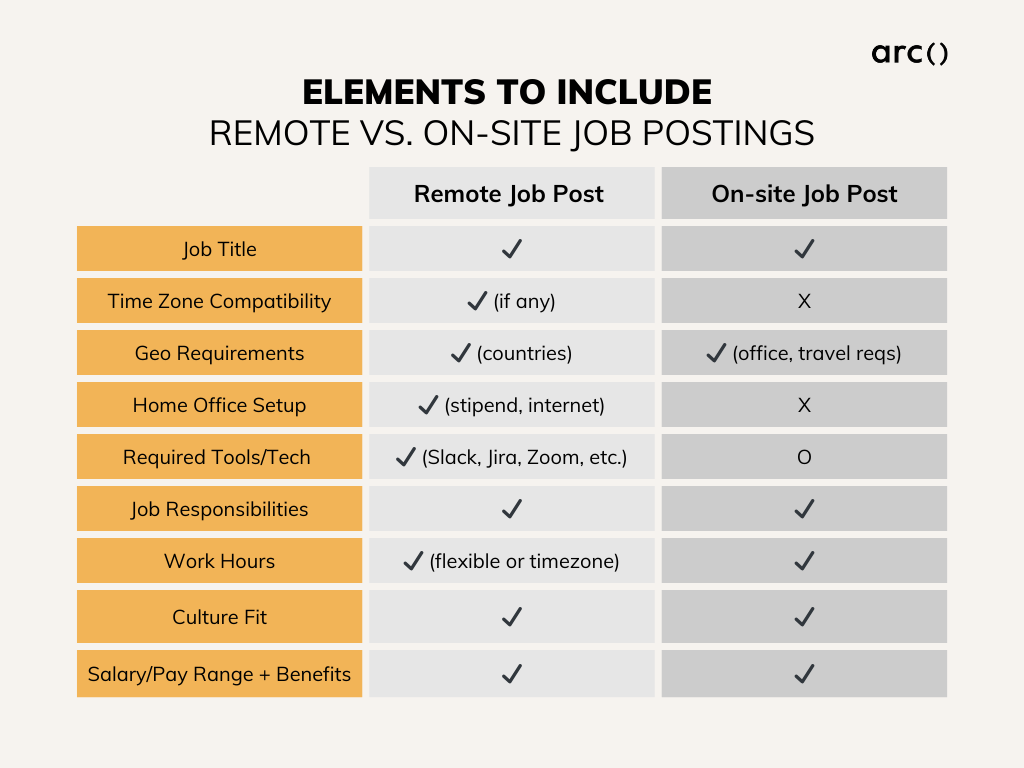What if you could hire anyone, anywhere? Remote hiring opens your talent pool to the world. For startups and growing businesses, it means access to top talent, cost savings, and flexibility. And with remote jobs predicted to rise 25% to 92 million by 2030, the trend is only growing.
No more limits based on location—you can find the best candidates no matter where they live. This guide covers the entire remote hiring process, from finding the right people to managing global compliance. Learn how to build high-performing teams that thrive in today’s remote work landscape.
What is Remote Hiring?
Remote hiring lets you recruit, interview, and onboard talent from anywhere, not just your local area. It’s now the norm in many industries, especially after COVID-19 pushed remote work into the mainstream. Whether you’re a fast-growing startup or an established company, remote hiring offers access to a larger, more diverse talent pool and helps reduce overhead costs.
By embracing remote hiring, you open yourself up to talent across various time zones and regions, allowing you to find the perfect fit for your needs—without the limits of geography.
Ready to hire top global talent and save?
- Access to 450,000+ talent in 190 countries
- Freelance or full-time remote hires
- Save up to 80% vs local US rates
The Benefits of Remote Hiring
Access to a Global Talent Pool
Remote hiring lets you tap into a vast talent pool, giving you access to top candidates from around the world. Whether you’re looking for skilled software engineers, creative designers, or experienced data scientists, hiring remotely allows you to find individuals with the expertise you need. You’re no longer constrained by the talent available in your local area, and this access to global talent can be a game-changer for your business.
Cost Savings
Remote hiring can lead to significant cost savings. You no longer need to maintain expensive office spaces, pay for utilities, or provide relocation packages. Additionally, by hiring remote workers from regions with lower costs of living, you can offer competitive salaries without overextending your budget. Leveraging tools like an outbound dialer can further streamline your outreach to potential hires, enhancing efficiency. This cost flexibility of hiring remote vs. in-house allows you to allocate more resources to growth initiatives, like product development or marketing, helping your business thrive.
Improved Flexibility and Work-Life Balance
Offering remote work gives your employees more control over their schedules, improving their work-life balance. With no need for a daily commute, remote employees can use their time more efficiently, which often leads to increased satisfaction. This flexibility not only keeps your team motivated but also helps you retain top talent, especially in competitive industries where employee benefits can make all the difference.
Increased Productivity and Job Satisfaction
Studies show that remote employees often experience fewer distractions and are more productive compared to their office-based counterparts. Without the interruptions that come with a traditional office environment, your team can focus on the tasks that matter most. This increase in productivity, combined with higher job satisfaction, means your remote employees are more engaged and committed to delivering their best work.
Environmental and Sustainability Benefits
By reducing the need for daily commutes and office-related energy consumption, remote hiring also supports sustainability efforts. If your business is committed to corporate social responsibility, remote work aligns perfectly with your environmental goals while also reducing operational costs.
Building a Strong Remote Work Culture
The success of your remote team depends on the culture you build. Remote employees need to feel connected, supported, and aligned with your company’s goals, even if they’re working thousands of miles away. Establishing a strong remote-first culture helps your team collaborate effectively and stay motivated, no matter where they’re located.
Commit to a Remote-First Mindset
If you’re serious about building a high-performing remote team, it’s essential to fully commit to a remote-first mindset. This means ensuring that your systems, processes, and communication tools are set up to support remote work from the ground up. It’s not just about offering flexibility; it’s about creating an environment where your remote employees can thrive.
Train your managers to lead distributed teams with empathy and clear communication. Encourage open dialogue and ensure that everyone understands the company’s goals and their role in achieving them.
Clear Communication and Transparency
Clear and transparent communication is critical for remote teams. You need to establish clear guidelines around how your team communicates (mostly sync or async), what tools they use, and what your expectations are. Tools like Slack, Microsoft Teams, and Zoom can help facilitate daily check-ins, team meetings, and one-on-one conversations. Setting up clear processes for regular communication helps prevent misunderstandings and ensures that everyone stays aligned with your business objectives.
Tools for Managing Remote Teams
To successfully manage a remote team, you’ll need to equip your employees with the right tools. Here are some essential platforms you should consider integrating into your workflow:
- Slack or Microsoft Teams: For real-time messaging and team communication.
- Trello or Asana: For project management, allowing you to track tasks, deadlines, and progress. We use Notion internally at Arc.
- Zoom or Google Meet: For video conferencing and interviews, fostering face-to-face interactions.
- GitHub or GitLab: If you’re hiring developers, these platforms allow for seamless collaboration on coding projects.
- Loom or Tella: A great tool for recording video messages, providing feedback, or sharing tutorials
By integrating these tools into your daily operations, you create a smooth and efficient workflow that keeps your team productive and engaged.
Read More: Top 12 AI Recruiting Tools for Hiring Top Talent
How to Write Job Listings for Remote Roles
Crafting a clear and compelling job listing is essential for attracting the right remote talent. When writing your remote job postings, be as specific as possible to ensure you find candidates who are not only qualified but also comfortable working in a remote environment.
Remote Work Expectations
Be specific about your expectations for remote work. Clearly outline work hours and time zone requirements, such as “must be available for meetings from 9 AM to 12 PM EST.” Mention necessary tools, like Slack for communication and Jira for task management. If you offer a home office stipend or require a certain internet speed (e.g., 100 Mbps), include that information to set candidates up for success.
Skills Needed
Beyond technical expertise, highlight the importance of soft skills like self-discipline, accountability, and communication. For example, state that “strong written communication via Slack is essential, as we work asynchronously.” Emphasizing these traits helps you find candidates who thrive in a remote setting.
Remote Working Skills
Emphasize specific remote skills, such as experience with tools like Zoom or GitHub for collaboration. Mention that candidates need to be comfortable working autonomously, managing their own tasks using Asana or Jira, and maintaining clear documentation in Confluence. This attracts both experienced remote workers and those looking to adapt quickly.
Cultural Fit
Reflect on your company culture and values in the job listing. For example, share how your team stays connected through virtual team-building events and annual in-person retreats. Make sure candidates understand how your company supports work-life balance, such as having a “no after-hours email” policy to help remote workers thrive.
By clearly defining these aspects in your job listings, you’ll attract candidates who are not only capable but also excited to work remotely.

Assessing and Interviewing Remote Candidates
Hiring remote employees requires a slightly different approach than traditional hiring. Clearly communicating the structure and expectations of the interview process is crucial. You need to focus on skills that are particularly important for remote work, such as communication, self-motivation, and the ability to work independently.
Skills Assessment
When you’re hiring for technical roles, like software development or data science, it’s important to assess your candidates’ abilities through practical challenges. Platforms like HackerRank, Codility, or GitHub allow you to evaluate a candidate’s coding skills in real-time, providing you with valuable insights into their problem-solving approach.
Video Interviews
The video interview is your chance to assess a candidate’s communication skills, professionalism, and ability to work in a remote setting. Pay attention to how clearly they communicate, their body language, and their comfort with remote collaboration tools. Use platforms like Zoom or Google Meet to conduct interviews, and consider incorporating live problem-solving exercises or screen-sharing sessions to get a deeper understanding of their skills.
Onboarding Remote Employees
Bringing a remote employee onto your team requires a thoughtful and structured remote onboarding process. This ensures that your new hires feel connected to your company from day one and have all the resources they need to succeed.
Structured Onboarding Plan
Develop a clear onboarding plan that outlines the tools, resources, and expectations for new hires. Provide access to documentation and set up virtual meetings with key team members. By having a clear process in place, you’ll make it easier for your new employees to integrate into your team, even from a distance.
Assign an Onboarding Buddy
Assigning an onboarding buddy helps new hires navigate your company’s remote environment. This person can serve as a go-to resource for any questions, helping new employees get up to speed more quickly and feel like part of the team.
Compliance and Legal Challenges of Global Hiring
When hiring remotely, especially across borders, you’ll need to be mindful of local labor laws, tax regulations, and compliance requirements. Hiring in different countries can quickly become complicated if you’re not familiar with the local legal framework.
Use PEO or EOR Services
Professional Employer Organizations (PEOs) and Employer of Record (EOR) services can simplify the process of global hiring. These services handle local payroll, taxes, and labor law compliance, allowing you to hire remote employees without having to set up a legal entity in each country.
Platforms like Deel, Remote, and Oyster specialize in these EOR services, offering you a cost-effective way to expand your global team while ensuring full compliance with local regulations.
Read More: The best EOR services 2024: Deel vs Remote vs Oyster
Remote Hiring Across Different Industries
Remote hiring isn’t a one-size-fits-all approach. Different industries require different strategies when it comes to hiring and managing remote employees. Here’s how you can tailor your approach based on your industry:
- Development: Focus on coding assessments and collaboration tools like GitHub or Bitbucket.
- Marketing: Look for creativity and communication skills, with an emphasis on platforms like Asana or HubSpot to manage campaigns.
- Customer Support: Hire candidates with strong communication skills and experience with customer service platforms like Zendesk or Freshdesk.
By tailoring your remote hiring process to the specific needs of your industry, you’ll ensure that you find the right candidates with the skills and experience necessary to thrive in their roles.
Common Remote Hiring Mistakes
While remote hiring offers incredible benefits, it’s easy to make mistakes along the way. Here are some common pitfalls to avoid:
- Lack of Clear Communication: If you don’t establish clear communication channels, your team can quickly become disorganized and disconnected.
- Hiring for Technical Skills Only: Don’t overlook soft skills like communication, self-discipline, and time management. These are just as critical for remote employees.
- Neglecting Onboarding: Failing to properly onboard your remote hires can lead to confusion and disengagement. Invest in a structured onboarding process to set your team up for success.
FAQs About Remote Hiring
- What platform can help hire remote talent?
You can use trusted marketplaces like Arc to hire top-vetted remote talent quickly, including both freelance and full-time remote employees. You can also recruit candidates yourself by using popular remote job sites. - How do I ensure compliance when hiring remote employees globally?
Using PEO or EOR services simplifies compliance, as they handle payroll, taxes, and benefits, ensuring you meet local legal requirements. - What are the biggest challenges of remote hiring, and how can they be solved?
Common challenges include managing time zones, maintaining communication, and ensuring productivity. These can be solved with clear communication guidelines, regular check-ins, and the right tools. - How do I create a remote-friendly company culture?
Focus on transparency, regular communication, and providing the tools your employees need to stay connected and productive. A strong culture is built on trust and open dialogue. - What are the costs associated with remote hiring?
Remote hiring can reduce office expenses and allow for salary adjustments based on the cost of living in different regions, making it a cost-effective option.
Wrapping It Up
Remote hiring is a powerful strategy for building a global team that can help you scale, access top talent, and reduce costs. By creating a strong remote work culture, using the right tools, and staying compliant with local regulations, you’ll set yourself up for long-term success in today’s increasingly remote world. Whether you’re looking to hire your first remote employee or expand your team globally, this guide provides the foundation you need to get started.
For those ready to take the next step, Arc can connect you with pre-vetted, top-tier remote talent worldwide, making it easier than ever to hire the right people for your team. Reach out today to find out how Arc can help you build a high-performing global team.
Ready to hire top global talent and save?
- Access to 450,000+ talent in 190 countries
- Freelance or full-time remote hires
- Save up to 80% vs local US rates








